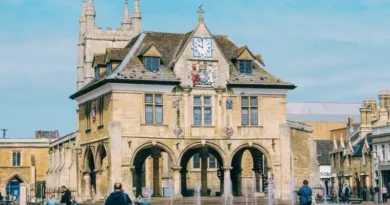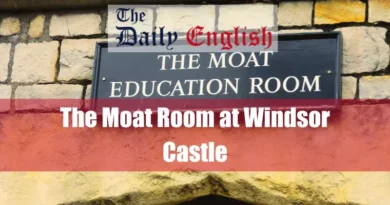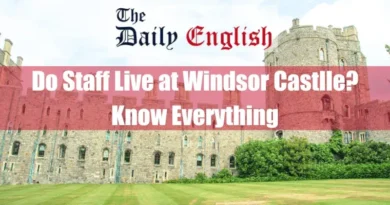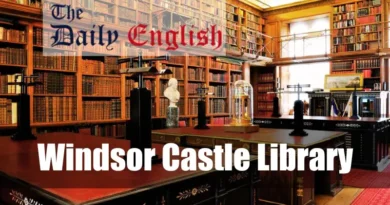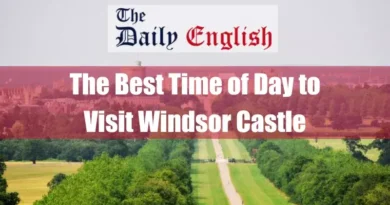Who Owns Windsor Castle
Windsor Castle is owned by King Charles III in right of the Crown, meaning the reigning monarch holds it during their tenure. The castle is part of the Occupied Royal Palaces Estate and is managed daily by the Royal Household. As an official royal residence, Windsor Castle has been continuously inhabited since its establishment in the 11th century and serves as a venue for state events and ceremonies. While the Crown owns the castle, it is not the monarch’s private property; rather, it is held in trust for future generations and the nation.
Takeaways
| Key Points |
|---|
| Windsor Castle is owned by the reigning monarch, currently King Charles III, “in right of the Crown,” meaning it is held for the nation rather than as private property and cannot be sold. |
| Originally founded by William the Conqueror in the 11th century as a defensive stronghold, the castle evolved into a royal residence under Henry I, with successive monarchs enhancing its structure and function. |
| It is managed separately from the Crown Estate as part of the Occupied Royal Palaces Estate, with the Royal Household overseeing maintenance and operations, funded through the Sovereign Grant and visitor admissions. |
| Windsor Castle serves as both a royal residence and a venue for state functions, hosting official events, investitures, and significant ceremonies, while also being accessible to the public, with recent initiatives increasing affordability for visitors. |
| As a historic and architectural landmark, the castle remains a symbol of British heritage, balancing tradition with contemporary governance under King Charles III’s emphasis on public engagement and preservation. |
Introduction
Windsor Castle stands as a testament to British history, serving both as a royal residence and a symbol of architectural evolution. Its ownership and management reflect the unique relationship between the British monarchy and the state, intertwining tradition with contemporary governance.
Historical Background
Foundation by William the Conqueror in the 11th Century
Following his victory at the Battle of Hastings in 1066, William the Conqueror sought to fortify his reign by constructing a series of castles across England. Around 1070, he established Windsor Castle, strategically positioned overlooking the River Thames to protect the western approaches to London. Initially built as a motte-and-bailey structure with timber, it featured a mound with a stockade, serving both defensive and administrative purposes.
Evolution into a Royal Residence Over the Centuries
Throughout the medieval period, Windsor Castle underwent significant transformations. Henry I, around 1100, was the first monarch to use Windsor as a royal residence, initiating the castle’s transition from a military fortification to a royal home. Henry II replaced wooden structures with stone, including the Round Tower, enhancing its defensive capabilities. Under Edward III (1327–1377), the castle was transformed into a Gothic palace, reflecting the monarch’s desire for a residence befitting the grandeur of the English crown. Successive monarchs continued to modify and expand the castle, balancing its defensive role with the comforts and aesthetics of a royal palace.

Ownership Structure
Definition of Ownership “in Right of the Crown”
Windsor Castle is owned by the reigning monarch “in right of the Crown,” a legal term indicating that the sovereign holds the property as part of the monarchy’s assets, separate from their personal estate. This means that while the monarch possesses the castle during their reign, it is not their private property and cannot be sold; instead, it is preserved for future generations and the nation.
Distinction Between Crown-Owned and Privately Owned Royal Properties
Royal properties in the United Kingdom are categorised based on their ownership and intended use:
- Crown-Owned Properties: These include assets like Windsor Castle and Buckingham Palace, held “in right of the Crown.” They are used for official functions and state ceremonies, remaining under the stewardship of the monarchy for the nation.
- Privately Owned Properties: These are personal assets of the royal family, such as Sandringham House and Balmoral Castle, acquired through personal means and not funded by the state. The monarch and their family have full control over these estates, including the right to sell or bequeath them.

The Crown Estate and Windsor Castle
Role of the Crown Estate in Managing Royal Properties
The Crown Estate is a collection of lands and holdings belonging to the British monarch, managed independently by the Crown Estate Commissioners. Established by an Act of Parliament, it operates as a commercial enterprise, with its profits transferred to the Treasury. The sovereign has official ownership of the estate but is not involved with its management or administration; nor does the sovereign have personal control of its affairs.
Clarification That Windsor Castle Is Part of the Occupied Royal Palaces Estate, Not the Crown Estate
While the Crown Estate encompasses a vast array of properties, Windsor Castle is part of the Occupied Royal Palaces Estate, a distinct category managed by the Royal Household. This classification ensures that properties like Windsor Castle are maintained for official duties and state functions, reflecting their unique status and historical importance.

Management and Maintenance
Responsibilities of the Royal Household in the Upkeep of Windsor Castle
The Royal Household is tasked with managing and maintaining Windsor Castle. This includes preserving the castle’s structural integrity, overseeing renovations, and ensuring that the estate meets the operational needs of the monarchy. The Royal Household prepares forward-looking strategies for the estate, outlining the use of principal buildings and accommodation requirements for staff.
Funding Sources for Maintenance and Renovations
The upkeep of Windsor Castle is primarily financed through the Sovereign Grant, a funding mechanism derived from a percentage of the profits generated by the Crown Estate. This grant covers the maintenance of royal residences, travel, and other official expenses. Specific projects, such as significant refurbishments, may also receive supplementary funding. For instance, a 10-year £369 million refurbishment of Buckingham Palace has been funded by temporarily increasing the Sovereign Grant. Such financial arrangements ensure that royal residences like Windsor Castle are preserved for both their historical significance and functional use by the monarchy.
Windsor Castle’s ownership and management are emblematic of the British monarchy’s enduring traditions, balancing historical preservation with contemporary governance structures.
Legal and Financial Aspects
Legal Status of Windsor Castle as a Royal Residence
Windsor Castle holds a unique legal status, being owned by the reigning monarch “in right of the Crown.” This means that the castle is not the personal property of the sovereign but is held by the monarch as part of the Crown’s assets, ensuring its preservation for successive generations and the nation. Such properties are distinct from privately owned estates like Sandringham House and Balmoral Castle, which are the personal possessions of the royal family.
Financial Implications of Its Ownership for the Monarchy and the State
The financial maintenance of Windsor Castle is primarily supported by the Sovereign Grant, a funding mechanism derived from a percentage of the profits generated by the Crown Estate. This grant covers the upkeep of royal residences, official travel, and other essential expenses. For instance, the Sovereign Grant for the fiscal year 2018-2019 was £82.2 million, encompassing core funding and specific projects like the reservicing of Buckingham Palace. Additionally, the Crown Private Estate Act 1800 provided the monarch with a private financial status, enabling ownership of private land and the ability to make a will.

Public Access and Use
Extent of Public Access to Windsor Castle
Windsor Castle has progressively increased public accessibility over the years. Visitors can explore various parts of the castle, including the State Apartments, which showcase ceremonial rooms the Royal Family uses. The castle is open to the public year-round, with specific areas accessible depending on official events and ceremonies. In 2025, a new initiative was introduced offering £1 tickets to individuals receiving Universal Credit and other specified benefits, allowing them and their households to visit the castle at a nominal fee.
Role in State Functions and Ceremonies
Beyond its function as a royal residence, Windsor Castle serves as a pivotal venue for state functions and ceremonies. It hosts state visits, official receptions, and significant events in the royal calendar. Notably, during the extensive refurbishment of Buckingham Palace, Windsor Castle has been designated to host state visits, underscoring its importance in official state affairs.

Recent Developments
Impact of Modern Events on the Castle’s Use and Management
Recent events have influenced the utilisation and administration of Windsor Castle. The ongoing £369 million refurbishment of Buckingham Palace, expected to span a decade, has shifted certain royal functions to Windsor Castle. This transition ensures the continuity of state affairs and accommodates the necessary renovations at the primary London residence.
Future Prospects for Windsor Castle Under Current and Future Monarchs
Looking ahead, Windsor Castle is poised to maintain its dual role as a cherished royal residence and a functional venue for state events. Under King Charles III, there is an emphasis on enhancing public engagement and accessibility. Initiatives such as the £1 ticket scheme reflect a commitment to making royal heritage more inclusive. As the monarchy evolves, Windsor Castle will likely continue adapting to contemporary expectations while preserving its historical and cultural significance.
Conclusion
Windsor Castle epitomises the enduring legacy of the British monarchy, seamlessly blending historical grandeur with modern functionality. Its unique legal status and financial arrangements ensure its preservation and operational efficiency. The castle’s accessibility to the public and its pivotal role in state ceremonies highlight its significance as both a national treasure and a living institution. Windsor Castle will undoubtedly continue to adapt as the monarchy progresses, reflecting the dynamic interplay between tradition and modernity.
FAQ
Who owns Windsor Castle?
The reigning monarch owns Windsor Castle in the right of the Crown. This means that while the King or Queen holds the property during their reign, it isn’t considered private property but rather part of the Crown Estate, passing from one sovereign to the next.
Is Windsor Castle part of the Crown Estate?
Yes, Windsor Castle is part of the Crown Estate, a collection of lands and holdings belonging to the British monarch. However, it’s managed separately by the Royal Household, distinguishing it from other properties within the estate.
Did Queen Elizabeth II personally own Windsor Castle?
No, Queen Elizabeth II did not personally own Windsor Castle. The reigning monarch holds the castle in an official capacity, not as private property.
Who manages Windsor Castle?
The Royal Household is responsible for the day-to-day management of Windsor Castle, overseeing its maintenance, operations, and the coordination of events held within its walls.
Is Windsor Castle a private residence?
While Windsor Castle serves as a private residence for the monarch, it also functions as a public museum and a venue for state occasions, reflecting its multifaceted role in British society.
How did Windsor Castle become a royal residence?
Established by William the Conqueror around 1070, Windsor Castle was strategically located above the River Thames. Its proximity to London and the royal hunting grounds made it an ideal royal residence, a role it has maintained for over nine centuries.
Does the Royal Family own Windsor Castle?
The Royal Family does not privately own Windsor Castle. It is held by the reigning monarch in right of the Crown, ensuring its preservation and continuity as a royal residence.
Can the monarch sell Windsor Castle?
No, the monarch cannot sell Windsor Castle. As it is held in trust for future generations, the castle is not considered private property and thus cannot be sold.
What is the difference between the Crown Estate and royal palaces like Windsor Castle?
The Crown Estate comprises lands and holdings the Crown owns but isn’t the monarch’s private property. Royal palaces like Windsor Castle are held by the monarch in right of the Crown and are managed separately.
Is Windsor Castle open to the public?
Yes, Windsor Castle is open to the public at specific times, allowing visitors to explore its rich history and architecture.
Who lived in Windsor Castle during Queen Elizabeth II’s reign?
Queen Elizabeth II used Windsor Castle as one of her primary residences, often spending weekends and Easter there.
What significant events occur at Windsor Castle?
Windsor Castle hosts various events, including state banquets, investitures, and royal weddings, showcasing its role as a working palace.
How is Windsor Castle funded?
The maintenance and operations of Windsor Castle are funded by the Sovereign Grant and visitor admissions, ensuring its preservation and public accessibility.
Has Windsor Castle always been owned by the monarchy?
Yes, since its establishment in the 11th century, Windsor Castle has been continuously owned and used by the reigning monarchs of England.
What is the role of the Royal Household in managing Windsor Castle?
The Royal Household is responsible for the upkeep, administration, and event coordination at Windsor Castle, ensuring it functions effectively as a royal residence and public attraction.
Are there private apartments within Windsor Castle?
Windsor Castle contains private apartments for the monarch and visiting dignitaries, alongside public state rooms used for official functions.
Did King Charles III inherit Windsor Castle?
Upon Queen Elizabeth II’s passing, King Charles III became the holder of Windsor Castle in right of the Crown, continuing its status as a royal residence.
Is Windsor Castle considered a heritage site?
While not officially designated as a UNESCO World Heritage Site, Windsor Castle is a historic monument of significant cultural importance in the UK.
What architectural styles are present in Windsor Castle?
Windsor Castle showcases a blend of architectural styles, including Gothic, Georgian, and Victorian, reflecting its long history and various renovations.
How has Windsor Castle’s ownership influenced its preservation?
Being held by the monarchy has ensured continuous maintenance and preservation of Windsor Castle, allowing it to remain a functional residence and historical landmark.




